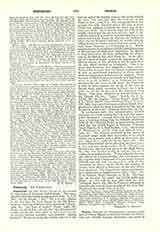

Peoria, Diocese of (PEORIENSIS), comprises that part of central Illinois south of the Counties of Whiteside, Lee, Dekalb, Grundy, Kankakee, and north of the Counties of Adams, Brown, Cass, Menard, Sangamon, Nacon, Moultrie, Douglas, and Edgar. It was cut off from the Diocese of Chicago in 1875. Six years later it was enlarged by the addition of Lasalle, Bureau, Henry, Putnam, and Rock Island Counties. Catholicism in this region dates from the days of Father Marquette, who rested at the Indian village of Peoria on his voyage up the Illinois River in 1673. Opposite the present site of the episcopal city, La Salle and Tonti in 1680 built Fort Crèvecoeur, in which Mass was celebrated and the Gospel preached by the Recollect Fathers, Gabriel Ribourdi, Zenobius Membre, and Louis Hennepin. With some breaks in the succession, the line of missionaries extends to within a short period of the founding of modern Peoria. In 1839 Father Reho, an Italian, visited Peoria, remaining long enough to build the old stone church in Kickapoo, a small town twelve miles distant. St. Mary’s, the first Catholic church in the city proper, was erected by Father John A. Drew in 1846. Among his successors was the poet, Rev. Abram J. Ryan.
Many of the early Irish immigrants came to work on the Illinois and Michigan canal; owing to the failure of the contracting company, they received their pay in land scrip instead of cash, and were thus forced to settle upon hitherto untilled farmland. These Irish farmers, with the Germans who began to arrive a little later, were the pioneer Catholics whose descendants now constitute the strength of the Church. In more recent years Poles, Slavonians, Slovenians, Croatians, Lithuanians, and Italians have come in considerable numbers to work in the coal mines. They are organized in parishes looked after by priests of their own nationality. The first appointee to the see, Rev. Michael Hurley, requested to be spared the responsibility of organizing and governing the new diocese. After many years of fruitful labor in Peoria, he died, vicar-general in 1898, and was mourned universally in the city and throughout the diocese.
Rt. Rev. John Lancaster Spalding was consecrated first Bishop of Peoria, May 1, 1877. Born of the distinguished Spalding family, in Lebanon, Kentucky, in 1840, and educated at Bardstown, Mount St. Mary’s, Emmittsburg, Louvain, and Rome, his career as pastor in Louisville, Kentucky, as orator, and as author had been marked by signal successes. The promise of his earlier life was more than fulfilled by the long years of his episcopate. Besides creating a new spirit in the Catholic life of the diocese, which found expression in new churches, schools, and institutions of education and charity, he sought fields of larger efforts for his zeal. He labored earnestly in the cause of Catholic colonization in the West. He preached the truths of life to an ever-increasing and deeply appreciative audience of American people. He ranks high among the educators of the country. The Catholic University of America owes its origin largely to his zeal. Spalding Institute, Peoria, a Catholic school for boys, built and equipped by his generosity, is another monument to his abiding faith in education. His writings are assured of permanent use and admiration by future generations. At the height of his usefulness he was stricken with paralysis on January 6, 1905, and resigned the see, September 11, 1908, residing in Peoria as Archbishop of Scitopolis, to which honor he was raised in 1909.
Right Reverend Edmund M. Dunne, D.D., the second and present Bishop of Peoria, was born at Chicago, February 2, 1864. He began his classical studies at St. Ignatius’s College, Chicago, and finished at the Petit Seminaire at Floreffe, Belgium. Completing his theological course at Louvain, he was ordained priest, June 24, 1887. Later studies in Rome prepared him for the doctor’s degree, which was conferred by the Gregorian University in 1890. Eight years of parish work in St. Columbkill’s church, Chicago, led to his appointment as pastor of Guardian Angels’ Parish. His ministrations among the poor Italians of Chicago were remarkably successful. It was with profound regret that they saw him removed to the chancellorship of the archdiocese, after seven years of unselfish labor. He was consecrated Bishop of Peoria, September 1, 1909.
Statistics: Bishops, 2; mitred abbot, 1; secular priests, 169; regular priests, 43; churches with resident priests, 151; churches, mission, 69; stations, 19; ecclesiastical students, 14; colleges for boys, 4; students, 355; academies for girls, 8; students, 1457; parishes with parochial schools, 69; pupils, 10,672; orphan asylums, 1; orphans, 75; industrial and reform schools, 1; total young people under Catholic control, 12,559; hospitals, 12; homes for the aged, 2; marriages, 1037; baptisms, 4527; burials, 1487; Catholic population, 96,000; number of square miles in diocese, 18,554.
- JAS. J. SHANNON.

